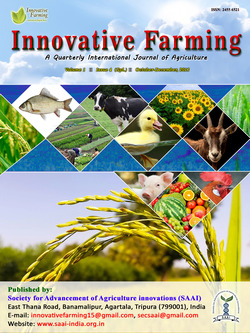
Development of Bulky Silk Yarn in Web Silk Reeling Process
Hariraj, G.*
Central Silk Technological Research Institute, Central Silk Board, Ministry of Textiles, Govt. of India, BTM Layout, Bangalore – 560 068, Karnataka, INDIA
Subhas. V. Naik
Central Silk Technological Research Institute, Central Silk Board, Ministry of Textiles, Govt. of India, BTM Layout, Bangalore – 560 068, Karnataka, INDIA
DOI: NIL
Keywords: Rotary traverse, Bulkiness, Dupion, Abrasion, Drape
Abstract
CSTRI, CSB, Bengaluru has developed a concept of web silk reeling machine for imparting bulkiness during the raw silk the production using differential traverse mechanism. The process variables viz., differential rotary traverse mechanism speed, reel speed and number of cocoons significantly influences the both reeling and quality characteristics of bulky raw silk and imparts desired bulkiness in the raw silk viz., diameter (bulkiness), productivity average size, size deviation and tenacity of bulky raw silk. The analysis of results also indicate that 3:1 combination between rotary traverse speed and reel speed produces good quality web structured bulky raw silk. The yarn produced using this machine was three times bulkier than the yarn produced from same number of cocoons in regular silk reeling machine. The silk fabrics produced using bulky raw silk in weft has shown better properties in terms of tensile and tear strength, crimp percentgae, abrasion resistance and drape co-efficient, which in turn result in better comfort properties.
Downloads
not found
Reference
Debisis Chattopadhyay. Rajiv Munshi. Dipankar Chakrovorthy. 2018, Studies on distribution of filament length and non-broken filament length for tropical tasar and muga silk cocoons vis-à-vis mulberry silk cocoons, Journal of the textile institute, 109 (9): 1202-1207.
Kariappa, B.K. and R.K. Rajan, R.K. 2004. Development of multivoltine silkworm breeds / hybrids in India for commercial exploitation. Indian Journal of Sericulture, 43:18-24.
Lakshmipathaiah, B., N. Hariraj, G. Subhas, V. Naik. Somashekar, T. H. 2000. Reeling technology package for producing gradable quality raw silk from crossbreed cocoons, Indian silk, 39(3): 24-29.
Mahadevaiah, B. M. Hariraj, G. Abhishek. K. S. Subhas, V Naik. 2015. Analysis of reeling performance and quality characteristics of raw silk produced from CSR16 X CS17 race bivoltine hybrid cocoons, Indian journal of Sericulture, 54 (1, 2): 60-63.
Ramachandran, T. 2001. Studies on Air texturization of raw silk. PhD Thesis, Anna University, Chennai, p.20-45.
Sonwalkar, T. N. 1993. “Handbook of Silk technology’, Wiley Eastern Limited, New Delhi, 65-92.
Somashekar, T. H. Kawakami, K. 2003. Manual on bivoltine silk reeling technology 2003, JICA, PPP BST project, Mysore, India, 32-76.
Subhas, V. Naik. Sangappa, N. Shillin. Hariraj, G. Mahesh, K. N. Subrata Roy. Somashekar, T. H. (2003). Reeling technology package for quality dupion silk, Indian silk, 41(10); 23-26.
Subhas, V. Naik. Hariraj. G. Arindam Basu. 2012. Influence of cocoon racial characteristics on reeling performance and yarn characteristics, Indian silk, 3(51 old) (6): 25-27.
Tsuboi, H. Nakaya, A. Haga, A. Nakamura, A. Aizawa, H. 1988. “Development of spun raw silk by reeling”, Tech. Bull. Seri. Expt. Station, Japan, 134: 234-257.
Tribhuwan Singh. Madan Mohan Bhat. Mohammad Ashraf Khan. 2011. Critical analysis of correlation and heritability phenomenon in the silkworm, Bombyx mori (Lepidoptera: bombycidae) Advances in Bioscience and Biotechnology, 2: 347-353.
